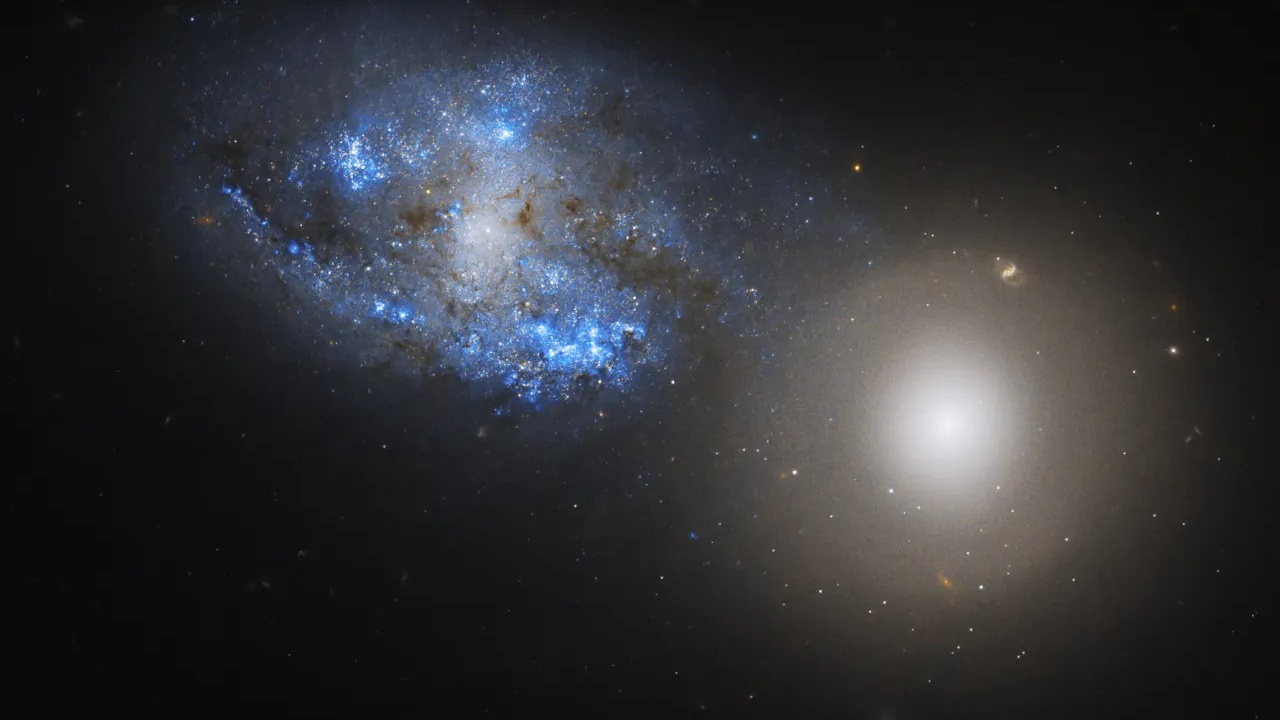
NASA has composed a beautiful melody to represent the cosmic collision of two galaxies.
The lenticular galaxy NGC 274 and barred spiral galaxy NGC 275, collectively known as Arp 140, are in the process of merging to form a single new structure. Following such a collision, the combination of interstellar material will trigger a burst of new star formation.
A new image from NASA's Hubble Space Telescope captures the interacting galaxies, with NGC 274 seen on the right and NGC 275 on the left. Scientists were able to transform the image data into music — a process known as data sonification — which NASA shared on X (formally Twitter) on Jan. 24.
Related: Iconic James Webb Space Telescope images turned into music
Using Hubble's observations, scientists assigned each color in the image data to a pitch, where bluer light is represented by a higher pitch and redder light is represented by a lower pitch. The final musical composition moves from left to right across the image.
A symphony of #CosmicCollisions! 🎵This pair of interacting galaxies is known as Arp 140. Scientists took the data in this new Hubble image and transformed it into music!They assigned pitch to color for the image as a whole (bluer light is higher, redder is lower). pic.twitter.com/x0eWj7S1tqJanuary 24, 2024
Higher tones at the beginning of the melody represent the blue light from NGC 275, which is likely emitted by bright, newly formed stars as a result of the ongoing galactic collision. By comparison, the lenticular galaxy NGC 274 doesn't have as much gas and dust as its spiral companion because it's primarily made up of old stars, which is why the melody transitions to lower, more muffled tones near the end.
Located in the constellation Cetus, the two merging galaxies exhibit different structures. While barred spiral galaxies have a bright central bar composed of stars, a lenticular galaxy has a more elliptical shape and hazy appearance. Lenticular galaxies also lack the well-defined arms generally seen in spiral galaxies.
"Typically, the arms of the [spiral] galaxy start at the end of the bar," NASA officials said in a statement releasing the new Hubble image on Jan. 24. "Lenticular galaxies, on the other hand, are classified somewhere between elliptical and spiral galaxies. They get their name from the edge-on appearance that resembles a disk."
Despite their differences, both lenticular and spiral galaxies are known to have a bright central bulge and flattened disk. And, in the new Hubble image, both galaxies are seen face-on, offering a full view of their spectacular intricacies.







